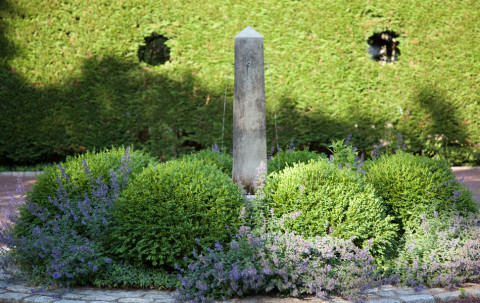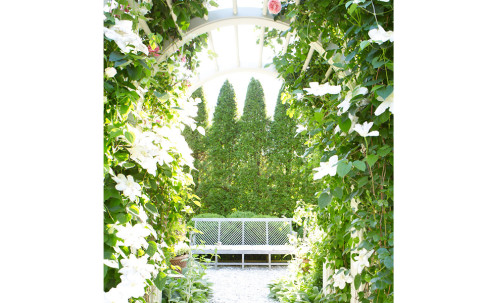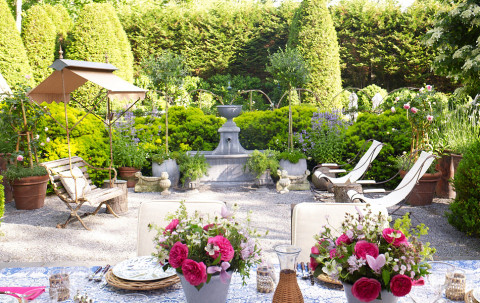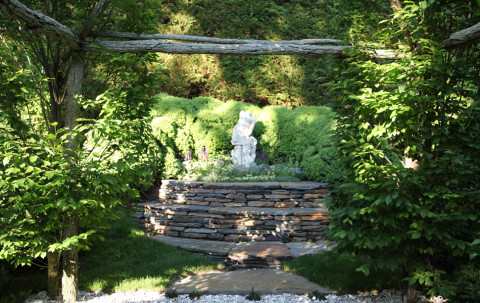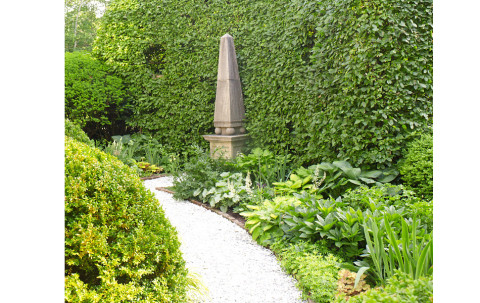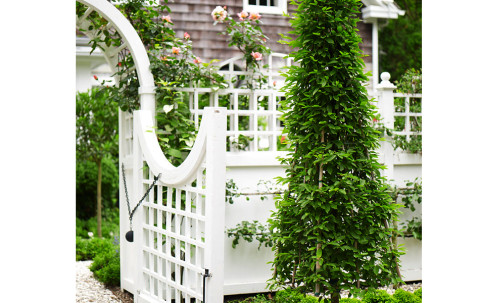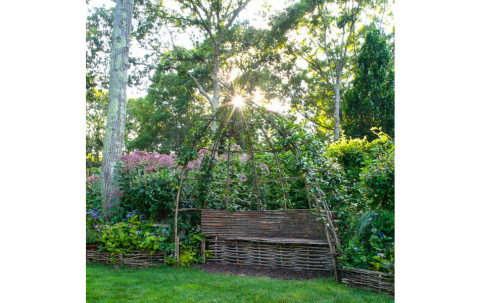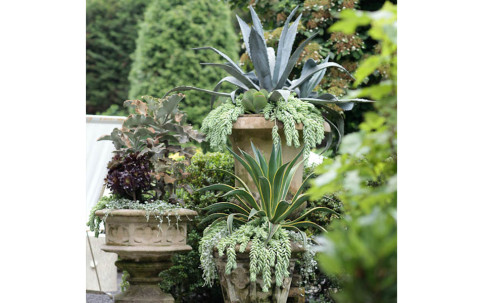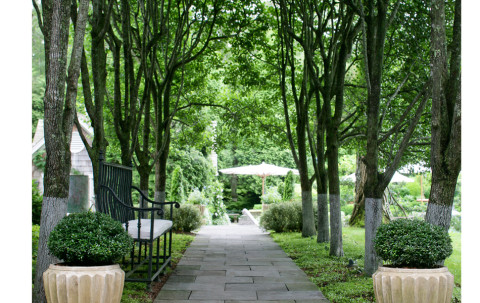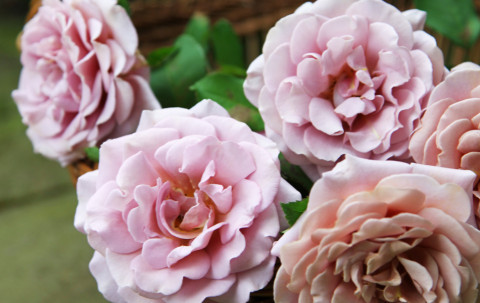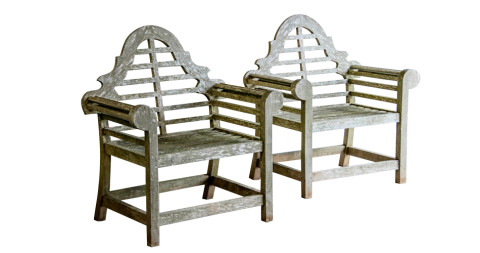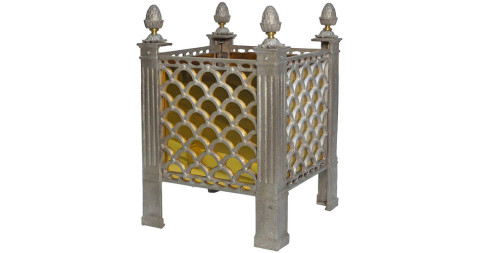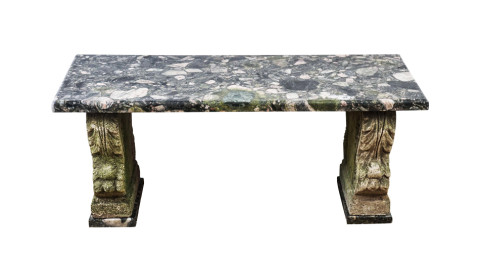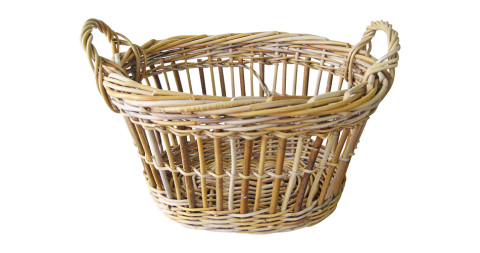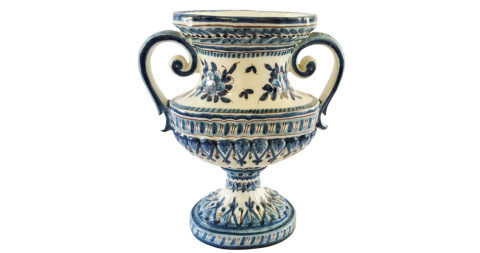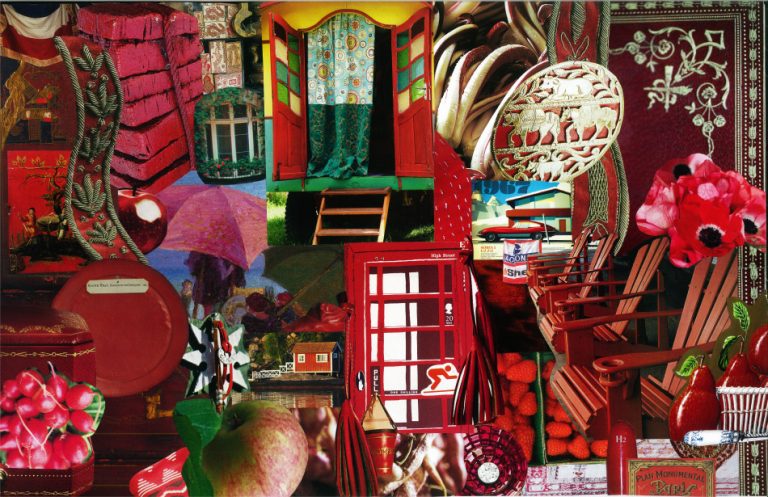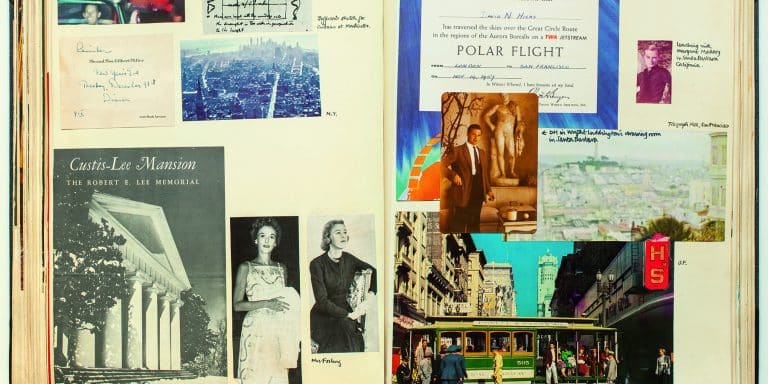
May 4, 2015The interior designer Charlotte Moss has written a new book, Garden Inspirations, and here shares some of her accrued knowledge about creating beautiful outdoor spaces. Photo by Eric Striffler, all other photos © Charlotte Moss and courtesy of Rizzoli
I’ve worked as an interior decorator for the past 30 years, but I can confidently say that what’s outside a house — specifically gardens, and in particular the garden of my home, Boxwood Terrace, in East Hampton, New York — inspires me just as much as what’s inside. Moreover, I’ve come to realize that the principles of gardening, architecture, landscape design and interiors are interchangeable, or, at the very least, highly adaptable. While architects put up walls, we gardeners plant hedges; architects lay floors, we create hardscapes; architects add decorative details, we add sculptures, fountains, topiaries and flower beds that burst with patterns and color.
Inside our homes, there is a sense of anticipation and discovery when we move from space to space — whether through a dramatic arched doorway; up or down a small flight of steps; or via a short, narrow hallway. Outside, you can experience these same feelings by creating a series of interconnected garden “rooms.” The size of these spaces doesn’t really matter. Rather, it’s about the ways they connect, complement and contrast with one another and the atmosphere created within each.
Atmosphere, an ephemeral quality, is the perfume of a place. When sights and smells merge they inscribe themselves like a date stamp in our memory.
My garden in East Hampton is made up of a series of intimate rooms — the rose garden, the shade garden, the pear allée and the living/dining terrace. Below are photos of some of these spaces along with my ideas for creating something similar in your own garden — or, perhaps, inside your own home.
SET THE SCENE
Openings carved into a sculpted hedge become windows, creating intriguing views through an otherwise impenetrable leafy levee. A French limestone fountain — surrounded by balls of boxwood, Russian sage (pervoskia) and catmint (nepetas) — provides the gift of music in the form of burbling water.
TAKE A SEAT
Can you imagine a more welcoming invitation than an archway covered in clematis intertwined with roses? Crushed oyster shells line the paths, an idea adapted from Colonial Williamsburg, providing textural contrast, brightness and sound underfoot. A teak bench backed by a boxwood hedge and sculpted arborvitae offers a place for private contemplation.
CONSIDER THE VIEW
When warm weather permits, we enjoy all lunches and some breakfasts on the terrace. Here, a graveled seating area beyond integrates the space further into the garden. A hedge of golden yew embraces the space, which is anchored by a zinc fountain flanked by pots filled with succulents, lavender, rosemary and roses surrounding two olive topiaries.
CHOOSE A FOCAL POINT
French doors open to the view behind the pool house, where a 19th-century statue of a gentleman and his dog stands sentry at the center of a small bed of perennials. Below, a stepped and stacked fieldstone wall creates another seating area away from the house, one warmed by the sun during the day.
MAKE SHADE
A semicircle-shaped hornbeam hedge forms the border of one side of the shade garden. An obelisk acts as a centerpiece and is flanked by two “windows” sculpted by Gilles Guillot, master gardener of the Prieuré d’Orsan in Maisonnais, a town in the Berry region of Central France. Crushed oyster shells make up a path that is lined with grasses, irises, hellebores, perennial geranium sanguineum and a number of hosta varieties.
ENCLOSE THE KITCHEN GARDEN
The entrance to the potager (the traditional term for a kitchen garden) is flanked by two topiaries shaped into hornbeam cones. Trellis walls and a gate frame this enclosed space, which is filled with boxwood-framed beds, fig trees, espaliered pears and stacked pots planted with herbs. Roses intertwined with honeysuckle trail across the top of the fence, and white hops lace themselves through the top of the arched gate.
BEHOLD THE GLORIETTE
The term “gloriette” comes from the French word glorie, or little room, and refers to a stand-alone garden structure, such as a pavilion, often sited on elevated ground and open on the sides. This one, also created by Gilles Guillot, is made of woven willow branches and supports cordons of mini pears. Glazed Anduze pots (traditional French terra-cotta pots decorated with hand-carved garlands and medallions), whose contents change from season to season, frame the structure.
ACCESSORIZE
The great thing about furniture and accessories, in the home or garden, is that they can be moved. The relatively easy mobility of pots affords any gardener the gift of flexibility and the opportunity to alternate plantings throughout the season and from year to year. These stone urns anchor the corners of the terrace. Filled with American agave, burrows tails and other succulents, they are an annual pleaser.
ROMANCE THE PATH
An allée of Bradford Pear trees frames the walk connecting the house to the pool; over time, they have created a green tunnel.
AND WE MUST ALWAYS HAVE ROSES!
 New York–based, Charlotte Moss designs interiors across the United States and the Caribbean and has also created collections of carpets, fabrics, china and enameled jewelry. She is the author of eight books on decorating and lifestyle, including Garden Inspirations, published last month by Rizzoli, in which the photos seen in this story can be found among other glorious images. A dedicated gardening enthusiast, Moss has been working on the outdoor space of her East Hampton home, Boxwood Terrace, for the past 25 years in collaboration with horticulturist Lisa Stamm and Stamm’s husband, architect Dale Booher.
New York–based, Charlotte Moss designs interiors across the United States and the Caribbean and has also created collections of carpets, fabrics, china and enameled jewelry. She is the author of eight books on decorating and lifestyle, including Garden Inspirations, published last month by Rizzoli, in which the photos seen in this story can be found among other glorious images. A dedicated gardening enthusiast, Moss has been working on the outdoor space of her East Hampton home, Boxwood Terrace, for the past 25 years in collaboration with horticulturist Lisa Stamm and Stamm’s husband, architect Dale Booher.
Or Support your local bookstore
Charlotte Moss’s Quick Picks
Shop Now
Pair of Lutyens-style garden seats, circa 1980, offered by Carl Moore Antiques
Shop Now
Pair of Asian-inspired ceramic elephant garden stools, 1960s, offered by Showplace Antique + Design Center
Shop Now
Cast-metal garden planter, 1990s, offered by Frederick P Victoria and Son, Inc.
Shop Now
Marble-and-cast-stone garden bench, ca. 1920, offered by Gottlieb Gallery
Shop Now
Woven-willow garden basket, 1890, offered by Nantucket House Antiques and Interior Design Studios, Inc.
Shop Now
Ceramic Portuguese vase, 1975, offered by William Laman Furniture, Garden and Antiques

 New York–based, Charlotte Moss designs interiors across the United States and the Caribbean and has also created collections of carpets, fabrics, china and enameled jewelry. She is the author of eight books on decorating and lifestyle, including Garden Inspirations, published last month by Rizzoli, in which the photos seen in this story can be found among other glorious images. A dedicated gardening enthusiast, Moss has been working on the outdoor space of her East Hampton home, Boxwood Terrace, for the past 25 years in collaboration with horticulturist Lisa Stamm and Stamm’s husband, architect Dale Booher.
New York–based, Charlotte Moss designs interiors across the United States and the Caribbean and has also created collections of carpets, fabrics, china and enameled jewelry. She is the author of eight books on decorating and lifestyle, including Garden Inspirations, published last month by Rizzoli, in which the photos seen in this story can be found among other glorious images. A dedicated gardening enthusiast, Moss has been working on the outdoor space of her East Hampton home, Boxwood Terrace, for the past 25 years in collaboration with horticulturist Lisa Stamm and Stamm’s husband, architect Dale Booher. 
